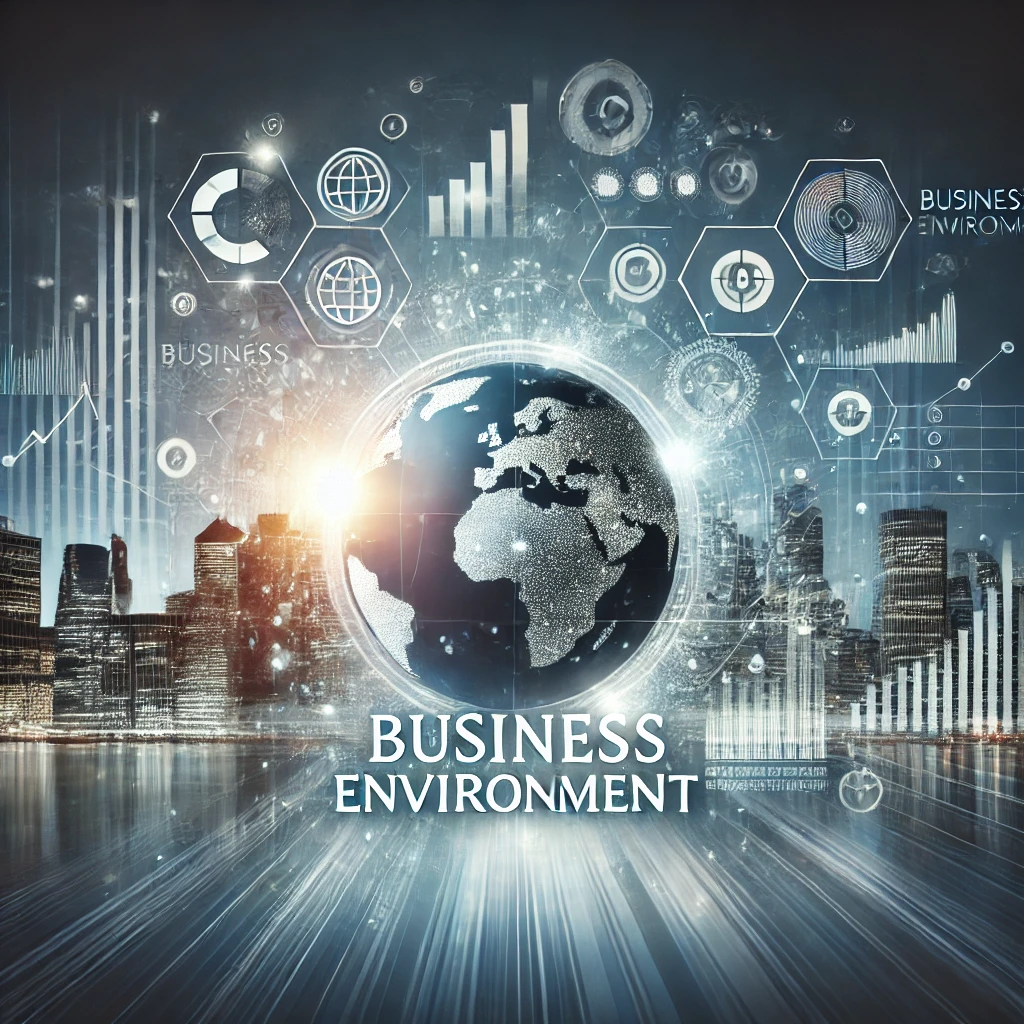The business environment is composed of all forces, whether internal or external, that affect a firm’s capacity to operate, innovate, and grow. Such forces constantly change, affect every facet of a business ranging from strategic decision-making to its daily operation, and help a firm develop and improve its business processes over time. To maintain a competitive edge and successfully adapt to changes in their business environments, businesses must learn about their business environment and classification.
What is Business Environment?
The business environment refers to the collection of all factors that affect the performance, strategies, and decision-making of a business. These can be internal, such as the organizational structure and human resources, or external, such as government policies and economic conditions. The business environment is dynamic, multifaceted, and interconnected, meaning businesses need to monitor and respond proactively.
Every business functions in two worlds: internal and external. It is within the company’s control, comprising elements such as financial resources, employees, and operational processes, which form its internal environment. The external environment, however, is outside a company’s control, comprising factors that include market trends, economic conditions, or legal regulations.
Key Characteristics of the Business Environment
- Dynamic: The environment constantly evolves with new technologies, policies, and societal trends.
- Interconnected: Changes in one component often influence others, such as a technological innovation affecting market competition.
- Complex: Businesses face numerous factors, requiring careful analysis and strategic planning.
- Unpredictable: The environment involves risks and uncertainties, such as sudden regulatory changes or economic downturns.
- Globalized: In today’s world, businesses must consider international markets, global competitors, and cross-border policies.
Features of Business Environment
The business environment exhibits several features that highlight its importance for businesses. These features define the environment’s scope, influence, and relevance.
Dynamic Nature
The business environment is constantly changing because of things such as technological advancements, a change in consumer behavior, and policy changes. For example, the rise of e-commerce has changed how businesses engage with customers, requiring traditional retailers to adapt.
Interconnectedness
Each component of the business environment influences the others. Economic growth, for instance, is likely to lead to increased spending by consumers, which may stimulate technological innovation to meet new demands. Businesses, therefore, need to understand interdependencies to navigate this environment effectively.
Complexity
The business environment includes diverse factors such as social trends, political regulations, and competitive dynamics. This complexity necessitates thorough analysis to anticipate potential impacts and respond effectively.
Uncertainty
The unpredictability of external factors, such as changes in government policies or global events like pandemics, creates uncertainty. Businesses must employ risk management strategies to minimize disruptions.
Global Reach
In the era of globalization, businesses are no longer confined to their local environments. International trade policies, foreign competitors, and global economic conditions significantly influence business strategies.
Regulatory Influence
Governments play a crucial role in shaping the business environment through regulations, tax policies, and trade restrictions. Compliance with these regulations is essential for businesses to operate smoothly.

Types of Business Environment
The business environment is divided into two main categories: Internal and External. The external environment is further divided into micro and macro environments.
Internal Environment
It’s the internal environment or factors within an organization that affect its operations and decisions. These factors are, therefore, controllable, meaning they directly affect a firm’s productivity and efficiency level.
Components of the Internal Environment
- Human Resources: Employees are the backbone of any organization. Their skills, attitudes, and engagement levels determine the business’s success. Companies must invest in training and development to harness their potential.
- Organizational Structure: A clear and efficient structure ensures seamless communication and decision-making. Businesses with decentralized structures often respond more quickly to environmental changes.
- Corporate Culture: Shared values, norms, and beliefs that drive behaviors and organizational effectiveness within an enterprise. A robust culture sparks innovation, collaboration, and the satisfaction of customers.
- Financial Resources: Adequate financial resources enable businesses to invest in new technologies, expand their operations, and sustain growth when times are difficult.
External Environment
The external environment includes factors beyond the organization’s control. These factors influence business strategies, market conditions, and customer preferences.
Micro Environment
The microenvironment refers to the immediate external factors directly affecting a business’s operations. These factors are industry-specific and interact closely with the organization.
Components of Micro Environment
- Customers: Meeting the needs of customers is a survival skill for business. Companies should monitor consumer behavior and their preferences to provide relevant goods and services.
- Suppliers: Reliable suppliers ensure timely delivery of quality raw materials. A good rapport with suppliers reduces production delays and operational costs.
- Competitors: Competitor analysis helps a business identify gaps in the market, strengthen its offerings, and gain a competitive advantage.
- Intermediaries: Distributors, retailers, and other intermediaries play a critical role in ensuring that products reach end consumers efficiently.
- Public: Community opinions, media perceptions, and public relations significantly affect a company’s reputation and brand image.
Macro Environment
The macro-environment encompasses broader societal factors that affect industries and markets. These factors indirectly influence businesses and are beyond their control.
Components of Macro Environment
- Economic Factors: Economic growth, inflation, interest rates, and employment levels determine consumer purchasing power and market demand.
- Political and Legal Factors: Government policies, trade regulations, and legal frameworks shape the operational landscape for businesses. Compliance is essential to avoid penalties and legal disputes.
- Technological Factors: Innovations like artificial intelligence, blockchain, and automation revolutionize industries, creating new opportunities and challenges.
- Social and Cultural Factors: Changing demographics, cultural values, and lifestyle trends impact consumer behavior. For example, the growing emphasis on sustainability has increased the demand for eco-friendly products.
- Environmental Factors: Climate change, resource scarcity, and environmental regulations influence industries such as manufacturing, agriculture, and energy.
| Internal Factors | External Factors |
|---|---|
| Human resources | Economic trends |
| Financial resources | Political and legal frameworks |
| Organizational structure | Technological advancements |
| Corporate culture | Social and cultural factors |
Importance of Business Environment
Understanding the business environment is vital for organizational success. It helps businesses align their strategies with market conditions and adapt to changes effectively.
- Strategic Planning: Knowledge of the business environment allows companies to set realistic goals and create actionable plans.
- Risk Management: Anticipating environmental changes helps businesses mitigate risks and minimize disruptions.
- Opportunity Identification: Businesses can identify new opportunities by analyzing market trends and customer needs.
- Adaptation to Change: A dynamic business environment requires companies to innovate and adapt continuously.
- Compliance: Awareness of legal and regulatory changes ensures adherence to laws, protecting businesses from penalties.
Business Environment FAQs
What is the business environment?
The business environment includes all internal and external factors that influence an organization’s operations, strategies, and decision-making processes.
What are the two main types of the business environment?
The two main types are the internal environment, which includes factors within the organization, and the external environment, which includes factors outside the organization.
Why is understanding the external environment important?
Understanding the external environment helps businesses anticipate changes, mitigate risks, and identify new opportunities for growth.
How do technological factors affect businesses?
Technological advancements create opportunities for innovation, improve operational efficiency, and enable businesses to meet changing consumer demands.
What is the role of economic factors in the business environment?
Economic factors like inflation, interest rates, and GDP growth influence consumer purchasing power, market demand, and business profitability.


